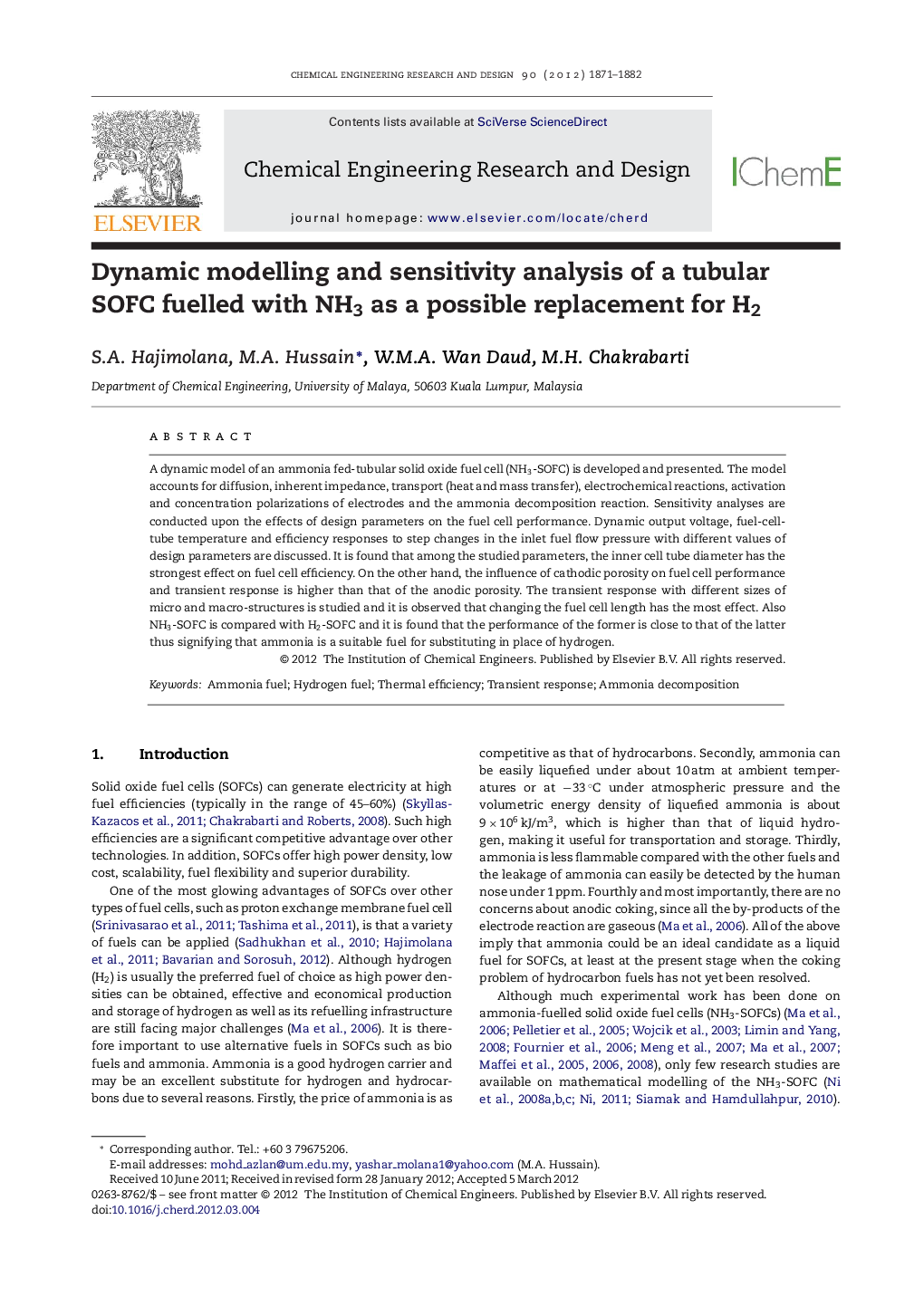| Article ID | Journal | Published Year | Pages | File Type |
|---|---|---|---|---|
| 621740 | Chemical Engineering Research and Design | 2012 | 12 Pages |
A dynamic model of an ammonia fed-tubular solid oxide fuel cell (NH3-SOFC) is developed and presented. The model accounts for diffusion, inherent impedance, transport (heat and mass transfer), electrochemical reactions, activation and concentration polarizations of electrodes and the ammonia decomposition reaction. Sensitivity analyses are conducted upon the effects of design parameters on the fuel cell performance. Dynamic output voltage, fuel-cell-tube temperature and efficiency responses to step changes in the inlet fuel flow pressure with different values of design parameters are discussed. It is found that among the studied parameters, the inner cell tube diameter has the strongest effect on fuel cell efficiency. On the other hand, the influence of cathodic porosity on fuel cell performance and transient response is higher than that of the anodic porosity. The transient response with different sizes of micro and macro-structures is studied and it is observed that changing the fuel cell length has the most effect. Also NH3-SOFC is compared with H2-SOFC and it is found that the performance of the former is close to that of the latter thus signifying that ammonia is a suitable fuel for substituting in place of hydrogen.
▸ Mathematical modelling of tubular NH3-SOFC. ▸ Modelling of entire system conducted and NH3-SOFC found cost effective. ▸ Polarisation losses, electrochemical phenomenon, NH3 decomposition covered. ▸ Comparable efficiencies between NH3-SOFC and H2-SOFC. ▸ Effect of sizing on fuel cell investigated on key SOFC parameters.
